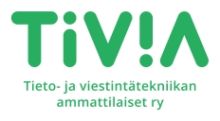Proof of Concept - why does it matter?

![]() We at Frends often start our collaboration with our new customers by implementing a Proof of Concept (PoC). PoCs are like short mini projects where we implement an agreed integration use case for a customer.
We at Frends often start our collaboration with our new customers by implementing a Proof of Concept (PoC). PoCs are like short mini projects where we implement an agreed integration use case for a customer.
The objectives of PoC are to demonstrate with a real-life example how Frends works, the value customers can gain from it, and give a new customer first-hand experience with the Frends iPaaS.
In this blog, I walk you through a couple of topics related to the Proof of Concept approach.
What do customers gain from Proof of Concept?
The PoC supports the customer's purchasing process and is always implemented based on the customer's targets and requirements.
The PoC:
- Demonstrates with concrete examples the value of Frends iPaaS.
- Helps customers to understand and better evaluate the capabilities of the Frends product.
- Facilitates the discovery phase from both product and organization perspectives.
What is needed for PoC?
A key element for a successful PoC is a use case. The closer it is to real-life needs, the better. The well-defined use case makes it easier to set success criteria for PoC. Once the use case is decided, the PoC implementation scope is agreed upon. As the target is to demonstrate the value, the scope is decided based on topics the customer is interested in. As PoC focuses on the main topics, all the nuances that do not add value to the PoC will be scoped out. Most often, PoC focuses on the Happy path of integration.

The next ingredients in our PoC recipe require integration logic, source and target systems, and source and target messages. The customer will grant necessary access rights for PoC implementation to the development or test environments to Frends Pre-Sales Architect named for the project. Example messages and test data are also needed for the implementation.
Next in the PoC is the Frends trial environment, where the PoC will be implemented. You can order a trial environment from here, or we will set it up for you as agreed in our meetings. Note that you can have the trial environment in use even if you are not running the PoC. The customer assigns point-of-contacts for the PoC. Contacts are needed to help Pre-Sales Architect, for example, with the customer's technical set-up-related questions potentially coming up during PoC implementation. At the planning stage, it is also recommended to name customer representatives who will evaluate the PoC results and set evaluation criteria.
What happens during the PoC?
After the PoC is agreed upon, a kick-off session is organized where the needed details for the PoC are finalized. The agenda may include data mapping between the target and source system, setting and testing needed access rights, and agreeing with the PoC implementation schedule. The session may also include installing on-premises Frends agent(s) to the customer's server in case PoC requires so or other needed preparation tasks.
The PoC is implemented mostly by Frends Pre-Sales Architects. It can be done as a joint development effort or as a delivered service. In the first case, the customer participates the sessions where the integration is developed. This method trains customers to use the Frends interface. Pre-Sales Architect implements the PoC solution in the latter stage, which is reviewed once it is ready.
The PoC implementation is done based on the agreed schedule and approach. Depending on the case, there may be check-up meetings during the implementation between the kick-off and evaluation sessions. Frends Pre-Sales Architect may contact named customer contacts to get more information or check the details during the project. However, the idea is that PoC should not encumber customer contacts too much.

The last step in the PoC is the evaluation session, where the PoC implementation is reviewed and evaluated against set evaluation criteria. Frends Pre-Sales Architect and Sales representative present the PoC implementation to the customer. Sometimes there are topics to be still worked on, which are resolved as agreed. When the PoC success criteria are met, the customer's journey in the iPaaS purchasing process can proceed to the next phase. PoC solution will remain in the trial environment, and customers can run it, review it and modify it as much as they like.
What happens after the PoC?
After the PoC results are evaluated, the process proceeds to the deal phase, where the customer discusses and resolves potential open topics with Frends sales representatives and negotiates the contracts for the Frends iPaaS. In addition to the iPaaS environment, contracts often include integration development work and support services.
I hope this blog provided you with the Proof of Concept idea and what happens during PoC implementation. You can always discuss your case by scheduling a demo meeting with our consultants. No strings attached.
Written by: Mika Haikonen, Pre-Sales Architect, Frends.


























































